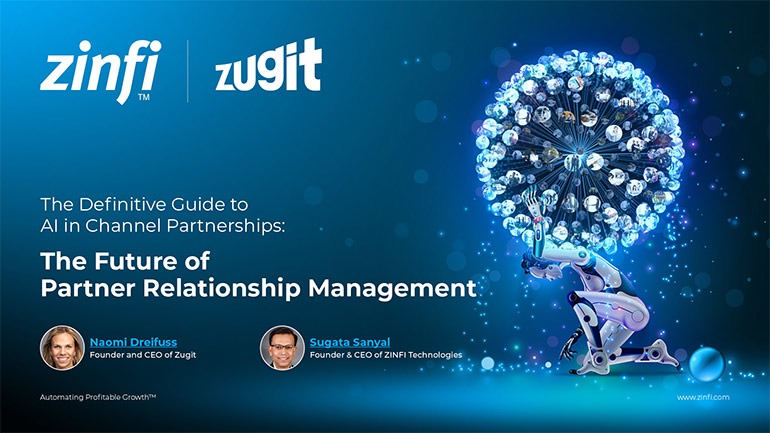Glossary - How to - PRM for Partner Profiling
How to Use PRM for Partner Profiling?
Introduction
What is PRM for Partner Profiling?
Partner Relationship Management (PRM) is a system that helps businesses manage their indirect sales channels by streamlining partner engagement, collaboration, and performance tracking. One critical aspect of PRM is partner profiling, which involves gathering and analyzing data about potential and existing partners to optimize relationships and maximize business outcomes.
In today’s competitive market, organizations that leverage PRM for partner profiling can make data-driven decisions to select the right partners, customize engagement strategies, and improve overall channel performance. With the increasing complexity of partner ecosystems, a structured approach to profiling ensures businesses align with partners who bring the most value.
Importance of PRM for Partner Profiling in PRM Automation
PRM platforms enable automated partner profiling by integrating AI-driven insights, real-time data analysis, and predictive analytics. This automation enhances partner segmentation, risk assessment, and personalized engagement. Businesses that utilize PRM automation for partner profiling can streamline partner selection, improve onboarding, and boost partner engagement while reducing manual administrative efforts.
Key Takeaways:
Defining Key Partner Attributes:
Effective partner profiling starts with defining key attributes such as:
- Industry & Market Segment: Identifying the partner’s focus areas ensures alignment with business goals.
- Revenue & Growth Potential: Evaluating financial stability and expansion capabilities.
- Technical & Sales Expertise: Understanding a partner’s competency and skillset.
- Geographical Coverage: Assessing the partner’s reach and market penetration.
Using a PRM platform, businesses can automate data collection and categorize partners based on these attributes for more effective decision-making.
Leveraging Data Analytics for Partner Scoring:
PRM solutions provide robust analytics to score partners based on various performance metrics:
- Historical Sales Performance
- Customer Satisfaction & Retention Rates
- Engagement Levels in Marketing Campaigns
- Product & Solution Competency
By implementing an AI-driven scoring system, companies can prioritize partners that contribute the most value and optimize channel strategies accordingly.
Automating Partner Onboarding & Training:
Once profiled, PRM platforms facilitate automated partner onboarding and training by:
- Offering role-based access to necessary materials.
- Providing training modules tailored to partner competencies.
- Tracking progress through certifications and assessments.
A well-structured onboarding process ensures partners become productive faster and maintain consistent brand messaging.
Customizing Partner Engagement Strategies:
Different partners require different engagement models. PRM automation enables:
- Tiered Partner Programs: Rewarding high-performing partners with exclusive benefits.
- Personalized Marketing Support: Delivering co-branded marketing materials based on partner strengths.
- Incentive Management: Automating rewards and commissions to drive performance.
Businesses can improve collaboration and retention rates by aligning engagement strategies with partner profiles.
Continuous Performance Monitoring & Optimization:
PRM platforms provide real-time insights into partner performance, allowing businesses to:
- Track sales achievements and adjust goals accordingly.
- Identify underperforming partners and offer targeted support.
- Optimize co-marketing strategies based on ROI analysis.
Regular evaluation ensures that businesses continue to work with partners that align with long-term growth strategies.
Summary of Key Takeaways:
- PRM for partner profiling streamlines partner selection and engagement.
- Data analytics helps score and rank partners effectively.
- Automated onboarding enhances partner productivity.
- Custom engagement strategies drive loyalty and performance.
- Continuous monitoring ensures long-term channel success.
Key Examples:
- Automotive Manufacturing: PRM for partner profiling helps automotive companies identify suppliers and distributors with strong logistics and technical expertise. Companies can assess partners based on supply chain efficiency, cost competitiveness, and innovation capabilities.
- Consumer Electronics: Consumer electronics brands use PRM platforms to profile retail and distribution partners based on sales volume, product expertise, and market reach, ensuring product availability in the most strategic locations.
- Energy Production: Energy firms leverage PRM to assess contractors and suppliers for renewable energy projects, considering factors such as environmental standard compliance and technical capacity.
- Financial Services: Banks and financial institutions use PRM-driven profiling to segment brokers, affiliates, and third-party vendors based on compliance credentials, customer acquisition rates, and service quality.
- Food and Beverage: F&B brands optimize their supply chain by profiling distributors and wholesalers based on distribution network efficiency, storage capabilities, and regional market expertise.
- Healthcare Services: Healthcare companies use PRM platforms to manage hospital and pharmacy partnerships, ensuring regulatory compliance and high-quality patient service.
- Information Technology: IT firms leverage PRM for partner profiling to segment resellers, system integrators, and managed service providers based on technical capabilities and certifications.
- Pharmaceutical Development: Pharmaceutical companies analyze distributor capabilities to ensure compliance with medical regulations and assess their market reach for drug distribution.
- Retail Industry: Retail businesses use PRM to categorize franchise partners and e-commerce affiliates based on customer engagement, sales performance, and inventory management skills.
- Telecommunications: Providers profile channel partners using network coverage, customer support quality, and subscription growth rates, optimizing their service delivery.
Conclusion:
PRM for partner profiling ensures businesses engage with the right partners to drive channel success. Organizations can enhance partner collaboration, optimize onboarding, and improve performance by leveraging data analytics, automation, and personalized engagement strategies.
With an evolving partner ecosystem, businesses must continuously refine their partner profiling strategies using PRM platforms to remain competitive and achieve long-term success.
Associated Keywords:
- Partner Relationship Management Profiling
- Automated Partner Profiling System
- PRM Partner Selection Best Practices















